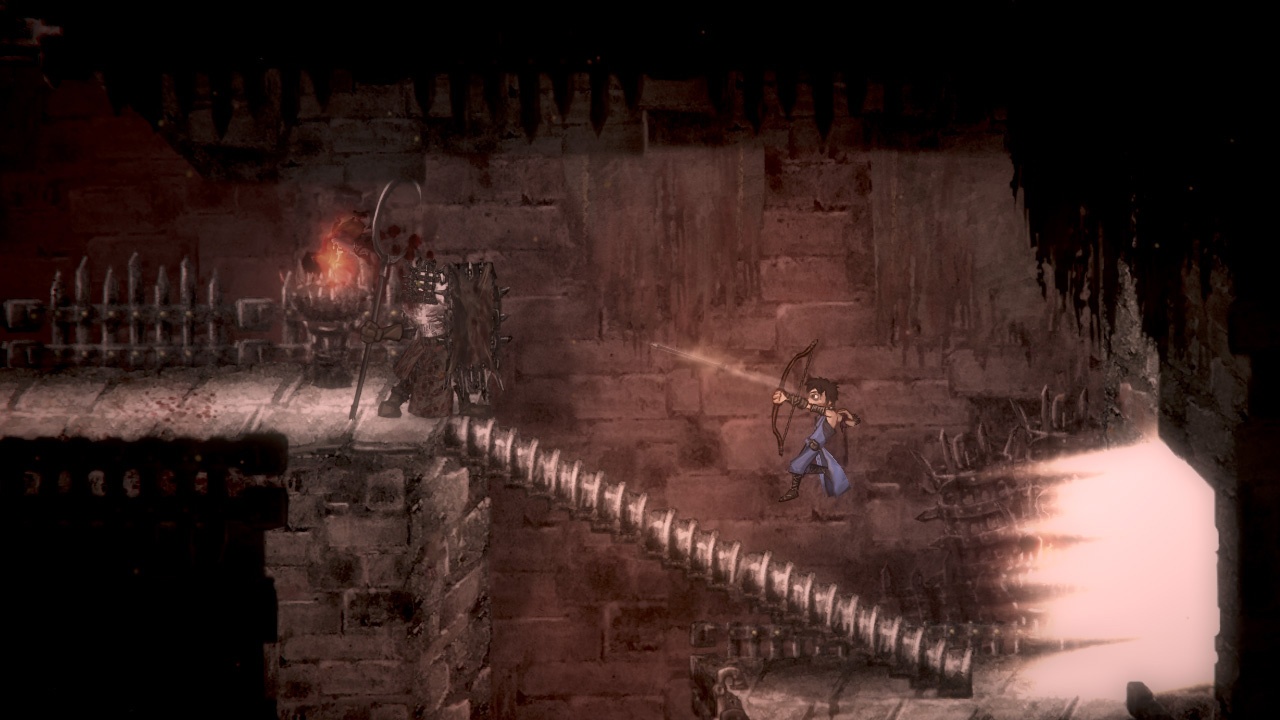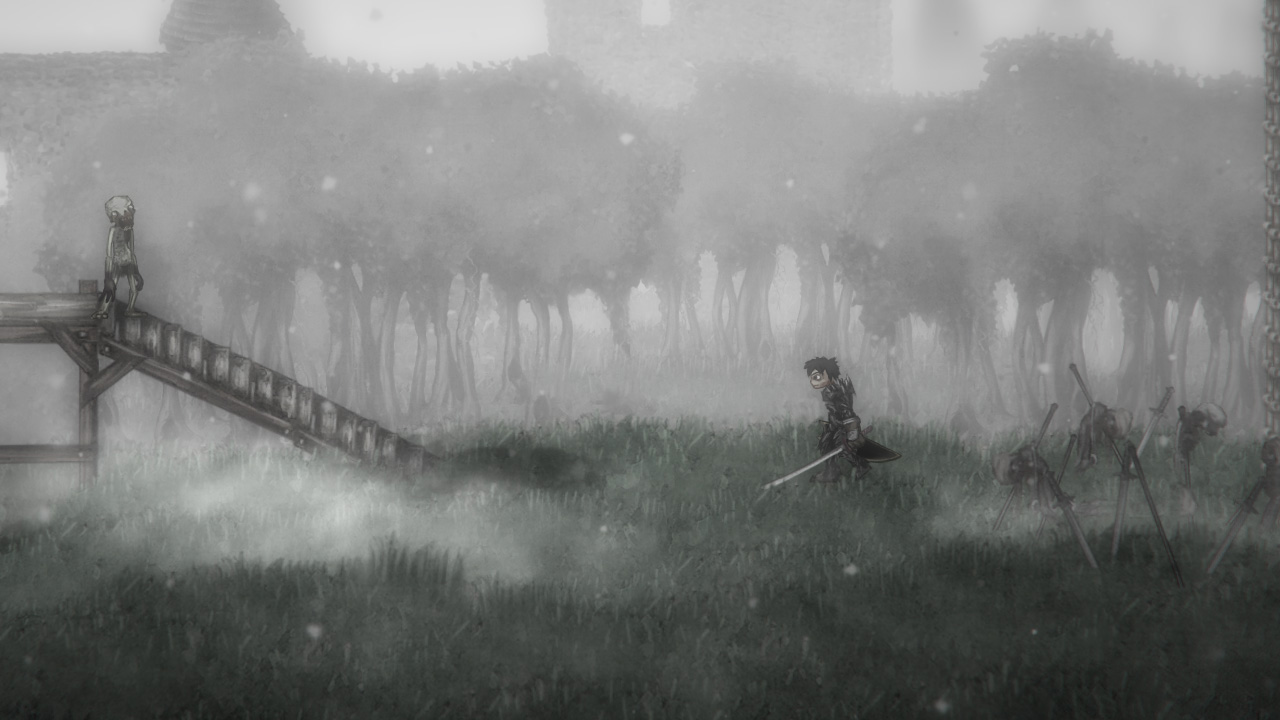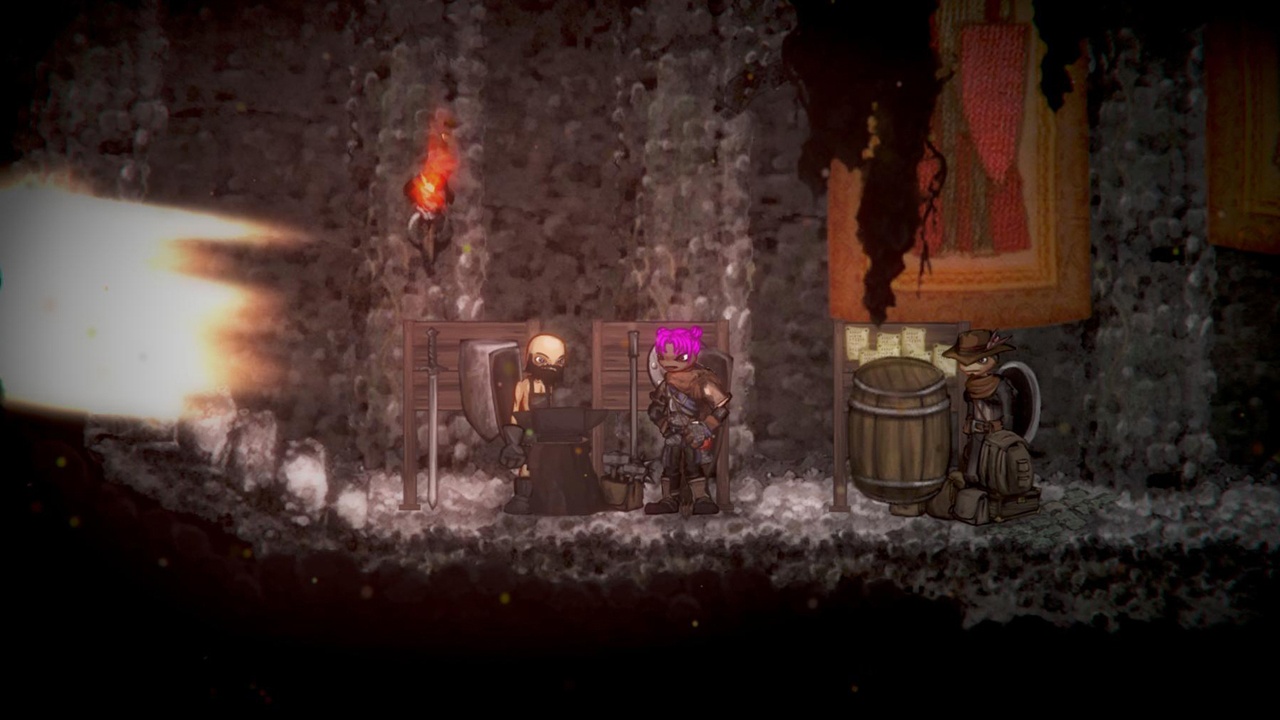
As much as I love the Souls franchise that From Software birthed, I do feel like it ruined the ability for hackneyed journalists to review or talk about any kind of game with difficulty. The jokes about “Skyrim with guns!” or “Call of Duty in space!” abound (and shit, I just made those observations a month ago), but the number of “XXX meets Dark Souls!” or “Souls-like!” is completely and utterly overdone. It invalidates the game itself, as people now have a predisposed idea of how they’re supposed to approach the experience, or what to expect, or even how they’re supposed to play it. So when there is a game that really has that same kind of atmosphere to it – intriguing, gothic storyline meets almost unfairly difficult gameplay – I’m hesitant to mention Dark Souls (even though I’ve done it several times). I really need to convey, however, that if there were to be a title that I’d compare Salt and Sanctuary to, it’d be the DS line.
The story of Salt and Sanctuary begins by placing you in the position of a Saltborn, which is what the human iterations of this world are known as. After some decent character customization, you begin your journey to end the great wars of your land, which can be accomplished by marrying off a princess to a distant king. Your ship, however, is attacked by pirates and an unspeakable beast, which sinks your boat, leaving you marooned on an island, but determined to get the princess back. Shortly, you’ll encounter an old man asking you about your faith and allegiances to Gods, and your decision will set in motion a truly compelling and fascinating tale of darkness and power. Things are not as they appear to be, and the deities all have investments in the decisions you make moving forward. Choose wisely, young Saltborn: good men and women have walked this path before, and all have perished. What will make you different?
Salt and Sanctuary is a 2D semi-Metrovania title with a great emphasis on combat, leveling, and critical RPG choices. Moving forward in the game requires patience, reflexes and a keen sense of adventure. You begin by choosing your sex, hair, features, region of origin and, most importantly, your character class. Each has their own advantage: the cleric starts with a healing spell, the knight has some great edged weapons bonuses, and the peasant…has a pitchfork. As you defeat enemies, you collect both gold and salt, which acts as EXP. Gather enough salt to qualify for a level up at your altar to your chosen creed and then get a point to invest in an incredibly complicated skill tree, which makes sense but is HUGE. Oh, and you’re given three choices for religion at the start of the game, but don’t be fooled: there’s more paths to walk the further into the game you get, and each has their own ending to reveal. So if you’re a massive completionist, strap in: there’s a lot still to come.

Let’s get the elephant out of the room right away. The combat for Salt and Sanctuary is divine, exquisite, and utterly shite on any given day. Depending on your class and decisions, you may end up with ranged weapons, melee weapons, blunts, sharps, throwing, expandable, magic, and just about every other kind of variant of equipment that you can imagine. Once you get engaged with an enemy, things can go any number of ways. Maybe it’s a simple, shambling mob, and you just gotta mash Y until it explodes into a bloody haze. After all, your attack, dodging and jumping are tied to a stamina bar that will decrease in leaps or steps depending on how many variants are affecting your character at any given time. Maybe you’ve got some heavier armor on, maybe you’ve gotten afflicted by an enemy that slowed you down and is sapping your strength. There are so many potential influences in a simple match that you could think things are going well…right up until they don’t.
That’s also because this game is absolute top-tier when it comes to ganging up on you. As early as the very first location you start dealing with enemies coming out of the ground and the woodwork, striking at you with serious damage while other bastards, some you can’t even see, shoot bolts down at you. So now you’ve gotta up your defensive game as well, figuring out if you have enough stamina for a dodge roll followed by a quick strike to stun an enemy long enough to build your stamina back up again OR if you wanna throw up a shield, absorb the projectile but potentially get overwhelmed, as yet another zombie comes out from behind the bookcase to murder you. This is all stuff you’re thinking about as soon as the game starts, and it doesn’t get REMOTELY simpler. Soon there’s great beasts that charge you, armored and steeled foes who fight like actual players, any number of jerks who have projectile weapons and, later, magic, and bastard bats that just fly down and annoy you with poison before flitting away to ping you again in a couple of seconds. You start to develop some good habits fast to survive. Swapping between long and short-range melee weapons fast. Dropping bags of salt to give you a second to breathe, or even tossing knives to enrage one enemy and draw him away from the pack, hopefully creating enough of a buffer for you to deal with things one on one. And then…there are the bosses.
Each boss brings something different to the smorgasboard of Salt and Sanctuary, and they also usually bring a minimum of two forms of attack, changing their techniques midway through battle based on the number of lucky shots that you’ve gotten off of them. The bosses are huge but not always “larger than life” with a couple of very, very memorable exceptions (hello, Bloodless Prince!). If you’re very lucky and very skillful, you might not die here. You might be able to kill a boss in a single go, and then you start to feel cocky. “That was a boss?” you scoff. “I can take on anything!” and then you stroll into the next encounter and suddenly you’re street pizza, and you have one chance to go back and get your salt that you lost. Oh yea. If you die, all your salt goes to the enemy that killed you, and you have only one chance to get it back. Die again and that salt is GONE. Pretty damn efficient in crushing your spirit, isn’t it? And if you’re like me and you decide to die because you went down the wrong path and fell through the endless darkness to land on your neck, that means your salt has now manifested itself as a being that is in a part of the game you can’t safely reach yet, and, if you die before you get there, the salt’s gone. Thanks, everyone!

But the game does a great job to make sure that your impending death doesn’t have to be an easy fall. Salt and Sanctuary’s skill tree gives you enough pathways to decide if you’re going to become a burly weapons expert or a nimble, lithe squirrel (or a mixture of the two). You have plenty of opportunity to buy new equipment, upgrade your existing equipment, and receive different blessings from your creed by keeping up your devotion. Salt buys levels, but it can get you so much more if you horde it until you find the right sources to plop it down. Plus, once you really get into the groove of the game, the dodging and striking becomes second nature, and you’re an amazing killing machine, trying to save a princess that may or may not be a metaphor. I’ll be real honest, the lore of Salt and Sanctuary gets just a bit convoluted at some points, but some re-reading confirms that this story is insane, yet compelling. Oh, and if you want to get a friend involved as a second sword/meatshield, it’s easy enough to have a second player join in, provided that you remembered to grab the right item during spawn. I didn’t get a chance to experience two player mode, but I imagine it’s one of those things where the worst that can happen is you have to watch your friend die a couple of times before they give up and go home.
From front to back, Ska Studios has done an amazing job of taking their own brand of dark storytelling and transposing it to a game where combat is important, but it isn’t everything. The world of Salt and Sanctuary is haunting and enthralling, and the branches of storytelling and Sin keep players coming back again and again. I finally was able to finish the game, only to find out that there is a New Game Plus, and I cannot wait to dive back in and find what new, fresh horrors await me. To have a game be so destructively hard and still make players want to keep playing – not out of masochistic pride, but genuine enjoyment – is a hallmark to bear and display proudly. I’m excited for new players to come enjoy, and I hope that it’ll fulfill all those who’ve been waiting for something to really tough to cut their teeth on with the Switch. Good news, boys: Salt’s back on the menu.

REVIEW CODE: A complimentary Nintendo Switch code was provided to Bonus Stage for this review. Please send all review code enquiries to press@4gn.co.uk.
Subscribe to our mailing list
Get the latest game reviews, news, features, and more straight to your inbox
Thank you for subscribing to Bonus Stage.
Something went wrong.
-
Gameplay - /10
0/10
-
Graphics - /10
0/10
-
Sound - /10
0/10
-
Replay Value - /10
0/10




